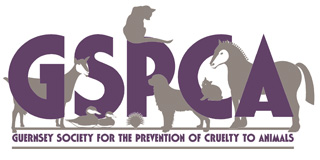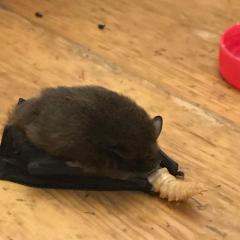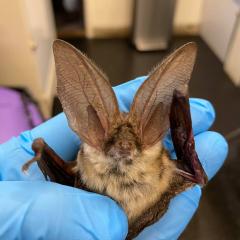- Home
- About
- 24 hour Emergency Wardens
- Animal Welfare
- Animal friendly hotels
- Awards & Recognition
- Corporate and group days
- Dog Fouling
- Dog Friendly Pubs
- Dogs Barking
- GSPCA Committee
- GSPCA Membership, Rules, News and Accounts
- GSPCA Opening & Visiting Times
- Gert the GSPCA Duck - Fun for kids
- Guernsey Animal Law
- Guernsey Dog Tax Law
- Our Team
- Privacy Policy and Cookies Policy
- Restrictions on Beaches in Guernsey
- St Andrews Floral Group & Conservation Work
- Stray Cockerels & Hens
- Surveys
- Terms & Conditions
- Transporting animals in and out of Guernsey
- Vacancies
- Volunteers
- Services
- Adoption costs at the GSPCA
- Birthday or Special Guided Tours at the GSPCA
- Boarding Facilities
- Cat Adoption
- Choosing a Puppy
- Comments & Feedback
- Dog Adoption
- Dog Behaviour
- Dog Training
- Education and Schools
- Fostering Scheme
- Lost & Found Advice
- Microchipping only £4.99 & advice
- Pet Bereavement Advice Page
- Pet Cremation Services
- Pet supplies and products on sale
- Room hire at the GSPCA
- Training & Courses
- Vote for a staff member or volunteer
- Animals
- Gallery
- Support Us
- Shop
- Blog
- Links
- Contact
Name:
Bat Advice
Animal:
Bats
Breed:
-
Age:
-
More Info:
In line with States of Guernsey advice please DO NOT visit the GSPCA if have been outside of the Bailiwick of Guernsey in the specified time and rules or have any symptoms of Coronavirus and we continue visits to the Shelter for only essential reasons and to please call us on 01481 257261 or email [email protected] before your trip to see if we can help without you coming to the Shelter. For the latest information and advice please visit http://www.gspca.org.gg/search/node/coronavirus
With huge challenges on our resources and a drop in income from boarding and donations please help us help animals in Guernsey with our #GuernseyCoronavirusCrisisAppeal by donating online via - https://giving.gg/donate/event/5876/GSPCA-Coronavirus-Emergency-Appeal
Any bat that is found on the ground, or in an exposed area, especially during the day, is likely to need help.
If the bat is on the ground, on an outside wall, or in exposed area where it may be vulnerable, it should be contained in a box.
You should avoid handling the bat, but if it is necessary WEAR GLOVES due to the small risk of a rabies type virus.
Containing a bat
You will need:
- A shoe box, with holes punched in the lid (or container of equivalent size)
- A cloth or teatowel
- A plastic bottle cap (milk bottle tops are perfect)
1. Contain the bat:
a) Like a spider, by placing a box on top of it and sliding a piece of card underneath.
b) alternatively, cover the bat with a cloth/teatowel and carefully scoop it up and place it in the box.
2. Put a tea towel or soft cloth in the box for the bat to hide in.
3. Put in a small, shallow container e.g. a plastic milk bottle top with a few drops of water (not enough for the bat to drown in). Make sure the water is topped up regularly.
4. Keep the bat somewhere quiet and dark at room temperature
5. Most importantly, call the GSPCA on 01481 257261 or in the UK the Bat Helpline on 0845 1300 228 for local bat carer numbers.
Only a bat that has been confirmed as fit and healthy by a bat carer should be released, and never during the day.
Please don't assume the bat is healthy and leave it outside to fly away.
A small number of bats in the UK have been found to carry EBLV, a rabies like virus. There are two known strains of EBLV: EBLV1 and EBLV2.
In the UK, ten bats have been found with the EBLV2 live virus: eight in England and two in Scotland (one of these cases was confirmed through active surveillance work, the other nine through a passive surveillance programme). All were Daubenton's bats.
Three bats have tested positive for EBLV1 antibodies: a serotine in the south of England and two Natterer's bats in Scotland. The presence of antibodies indicates exposure to the virus.
The Animal Health Veterinary Laboratories Agency has tested over 10,000 UK bats since 1986 for EBLV through its passive surveillance programme and only nine bats (as described above) have been found with the live virus. (These bats have been sent in by members of the public and bat workers after the bats have died from natural causes.)
Further active surveillance research by the Department of the Environment, Food and Rural Affairs (DEFRA), the Scottish Executive and Scottish Natural Heritage has taken place and found just one bat that tested positive for the live virus. Details can be obtained from the Bat Helpline (0845 1300 228).
The discovery of EBLV in bats in the UK does not affect the UK's rabies free status.
If you find a dead bat please call the BCT Helpline on 0845 1300 228. They can then send you postage-paid packaging so that you can send the dead bat to the Animal Health Veterinary Laboratories Agency for passive surveillance testing to check for the rabies virus.
Can people catch rabies from bats?
The risk of catching the virus from a bat in the UK is extremely low, for several reasons:
Passive surveillance of bats for rabies in the UK since 1986 has found only nine bats, of over 10,000 tested, with the live virus (the tenth bat identified with the live virus was through active surveillance work). All have been Daubenton's bats, which tend not to roost in buildings.
Human contact with bats is very rare, even when they share the same buildings.
EBLV is transmitted by the bite of an infectious bat or by its saliva entering a wound or mucous membrane. There is therefore no risk to people if they do not approach or handle a bat.
Bats are not aggressive, although like any wild animal, they may bite to defend themselves if handled. A bat that appears to be baring its teeth is actually 'scanning' you with its unique method of echolocation - building up a picture of its environment by using a type of sonar, which is mostly inaudible to humans.
There is an effective treatment available from your GP for those exposed to EBLV; this must be administered as soon as possible after exposure. BCT takes a precautionary approach, and so advises that anyone who is bitten by a bat visits their GP for medical advice.
Sadly, in 2002 a batworker from Scotland died from EBLV, which is why BCT takes a precautionary approach and advises that anyone who is bitten by a bat obtains advice from his/her GP.
What should I do if I am bitten by a bat?
The chances of catching rabies from any wild animal are increased if no action is taken should you be bitten or scratched. We therefore advise people to always follow this advice:
Wash the wound immediately with soap and water for at least five minutes. Additional cleansing of the wound site with an alcohol base or other disinfectant is also recommended.
Seek immediate medical advice from your GP or A & E, even if your rabies vaccinations are up to date.
Contain the bat so that it may be collected and assessed by a bat worker. Bats can squeeze through very small spaces, so keep it in a well-sealed container with adequate ventilation holes, a piece of cloth to hide in, and a shallow container of water for the bat to drink from. Make sure you avoid getting bitten again by wearing gloves or using a cloth to handle the bat.
In Guernsey contact the GSPCA on 01481 257261 or in the UK contact the Bat Helpline on 0845 1300 228 so arrange collection and identify the bat.
Bat workers and animal rescue staff trained to handle bats for conservation and welfare purposes should:
Ensure they have up-to-date rabies vaccination protection*
Always wear thick protective gloves when handling bats
Follow the advice above if bitten
We are lucky enough to have 18 species of bat in the UK, 17 of which are known to be breeding in the UK and 3 in Guernsey - that's almost a quarter of our mammal species.
Every summer, thousands of people venture out to experience the wonder of bats in their natural environment. Sadly, bat populations have suffered severe declines during the past century, but the Bat Conservation Trust and more than 100 local bat groups across the UK and Channel Islands are working hard to help our bats hang on.
UK Resident bat species and those we may see in Guernsey are:
Our resident breeding species are:
Alcathoe bat
Barbastelle
Bechstein's bat
Brandt's bat
Brown long-eared bat
Common pipistrelle
Daubenton's bat
Greater horseshoe bat
Grey long-eared bat
Leisler's bat
Lesser horseshoe bat
Nathusius' pipistrelle
Natterer's bat;
Noctule
Serotine
Soprano pipistrelle
Whiskered bat.
And then there are some migrant species









